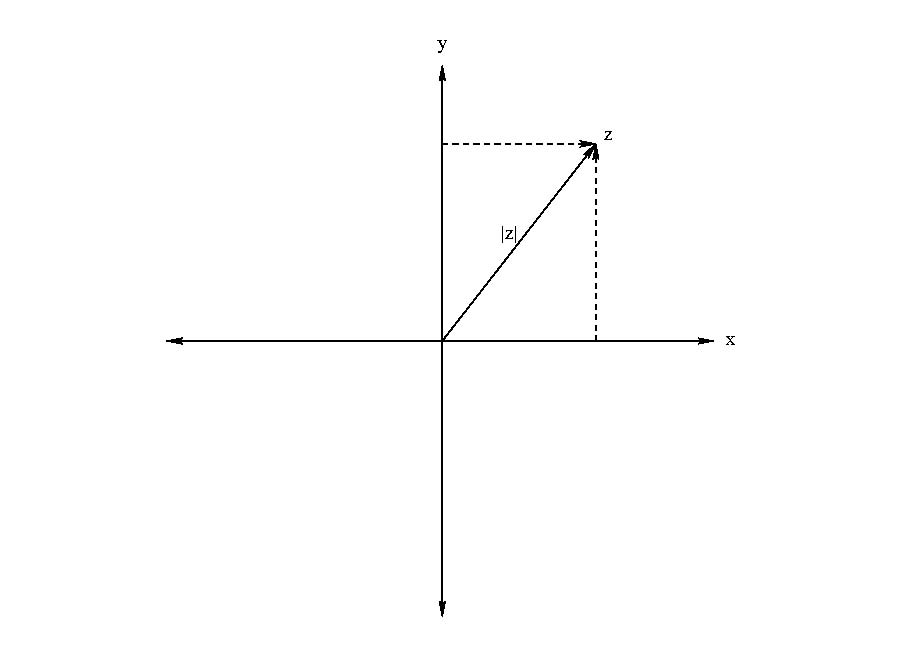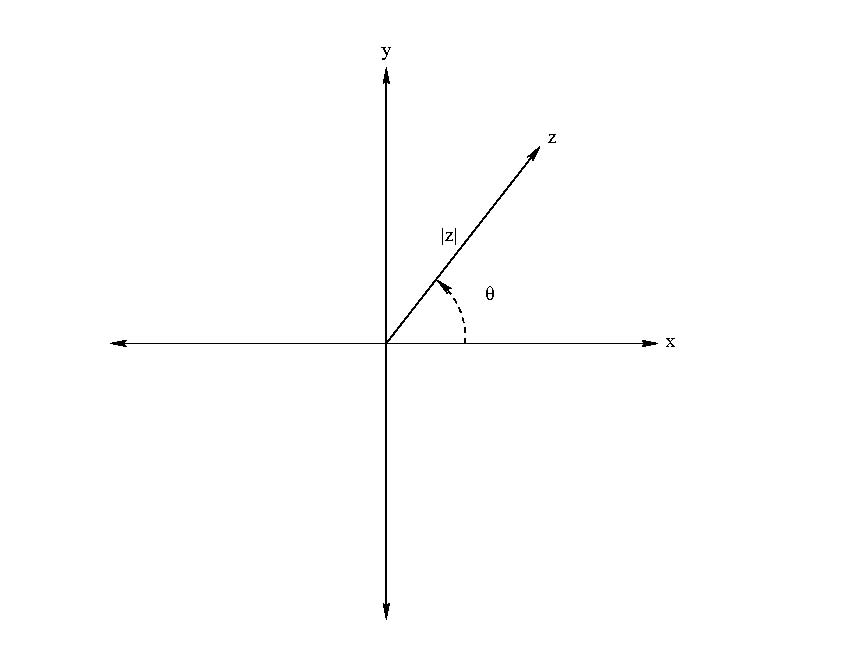Complex numbers arise naturally from an attempt to solve the equation

It's easy enough to write such an equation down, but how would you
solve it? The answer is

We let the symbol  represent
represent  , so that
, so that  . Then
any number of the form
. Then
any number of the form

where  and
and  are real, is called a complex number.
Let's take some other complex number to be
are real, is called a complex number.
Let's take some other complex number to be  , where
, where  and
and  are real. Then the two complex numbers are equal,
are real. Then the two complex numbers are equal,

which is to say

if and only if

We refer to  as the real part of the complex number
as the real part of the complex number  and
and
 as the complex part. Sometimes these are written as Re(
as the complex part. Sometimes these are written as Re( )
and Im(
)
and Im( ), respectively.
), respectively.
We may restate the equivalence condition as  if and only if
the real part of
if and only if
the real part of  is equal to the real part of
is equal to the real part of
 and the imaginary part of
and the imaginary part of  is equal to the imaginary part of
is equal to the imaginary part of  .
.
Complex numbers are multiplied like any other binomial expression:

where we have used  .
.
The complex conjugate of the complex
number  is denoted
is denoted  and is given by
and is given by

One reason for defining this is that a number times its own complex
conjugate is real,

Note that the complex conjugate of the complex conjugate is the
original complex number and

Note that the complex conjugate of a product is the product of complex
conjugates:

We also call this the modulus squared so
that the modulus is

It is often useful to look at a graph for a complex number. The graph
consists of an x-axis for the real part, and a y-axis for the
complex part. This is shown in Fig.~?. In this
figure, it is easily seen that we can think of  as a
two-dimensional vector and that the magnitude (length) of the vector
is the modulus of the complex number,
as a
two-dimensional vector and that the magnitude (length) of the vector
is the modulus of the complex number,  .
.

Figure B.1: A complex number in Cartesian coordinates.
Another useful way to represent this is with polar coordinates. We
can do this by writing

It turns out that

so we could also write

It is often the case that people will write this as

where  as is usual for polar coordinates. Then,
everything is just like polar coordinates, with the exception of the
inclusion of the factor
as is usual for polar coordinates. Then,
everything is just like polar coordinates, with the exception of the
inclusion of the factor  . (See Fig.~?.)
. (See Fig.~?.)

Figure B.2: A polar coordinate representation of a complex number.































